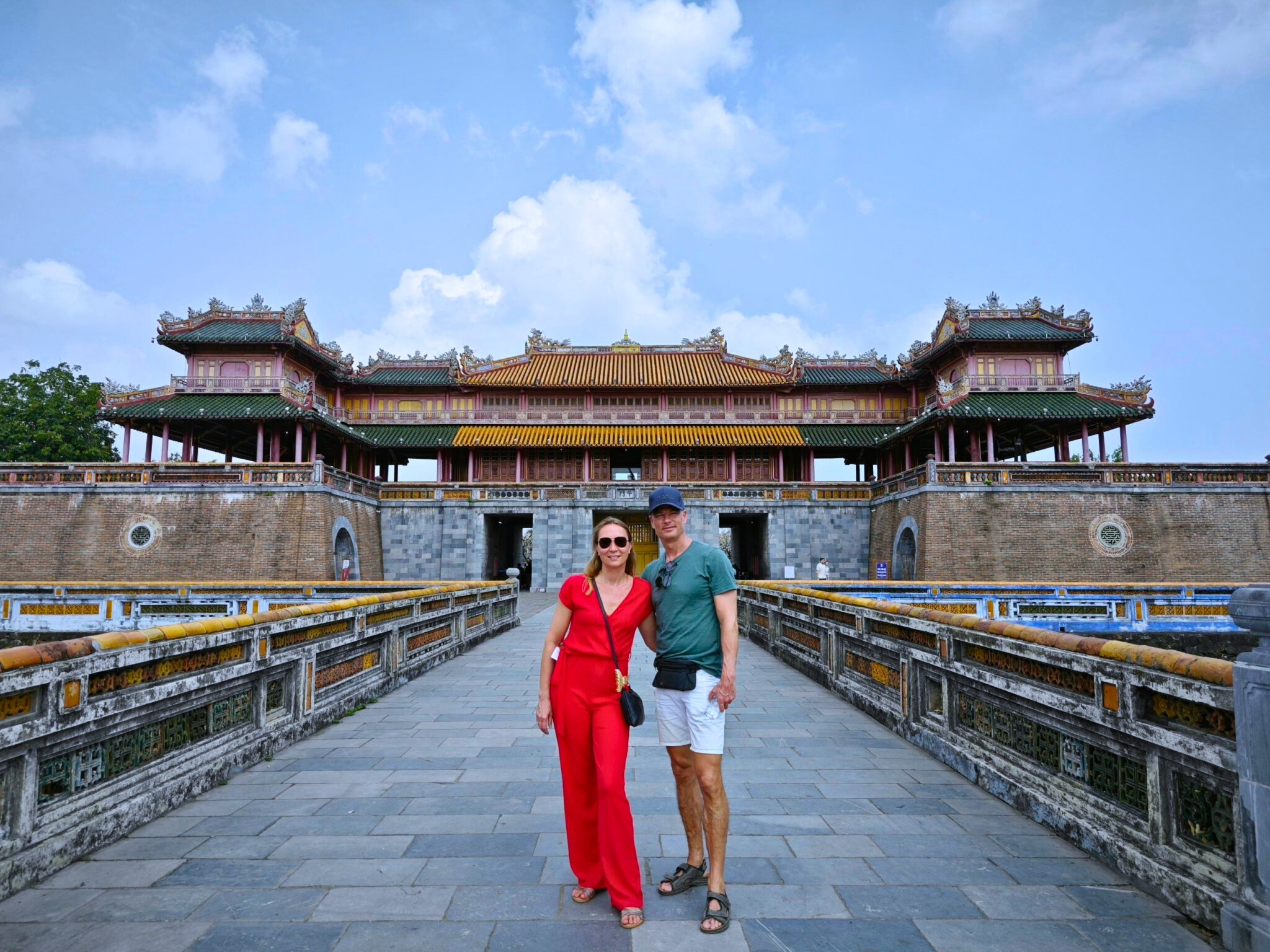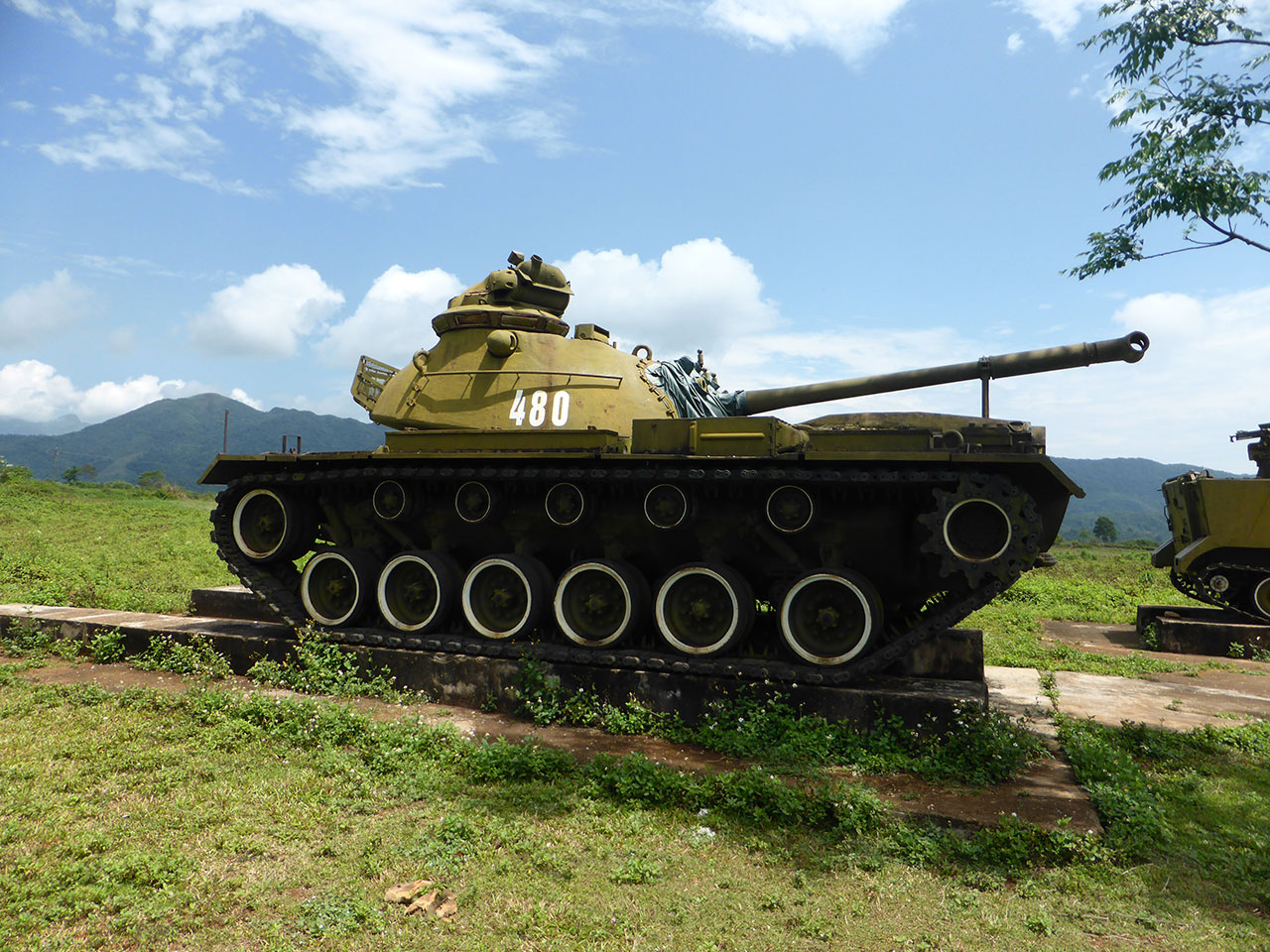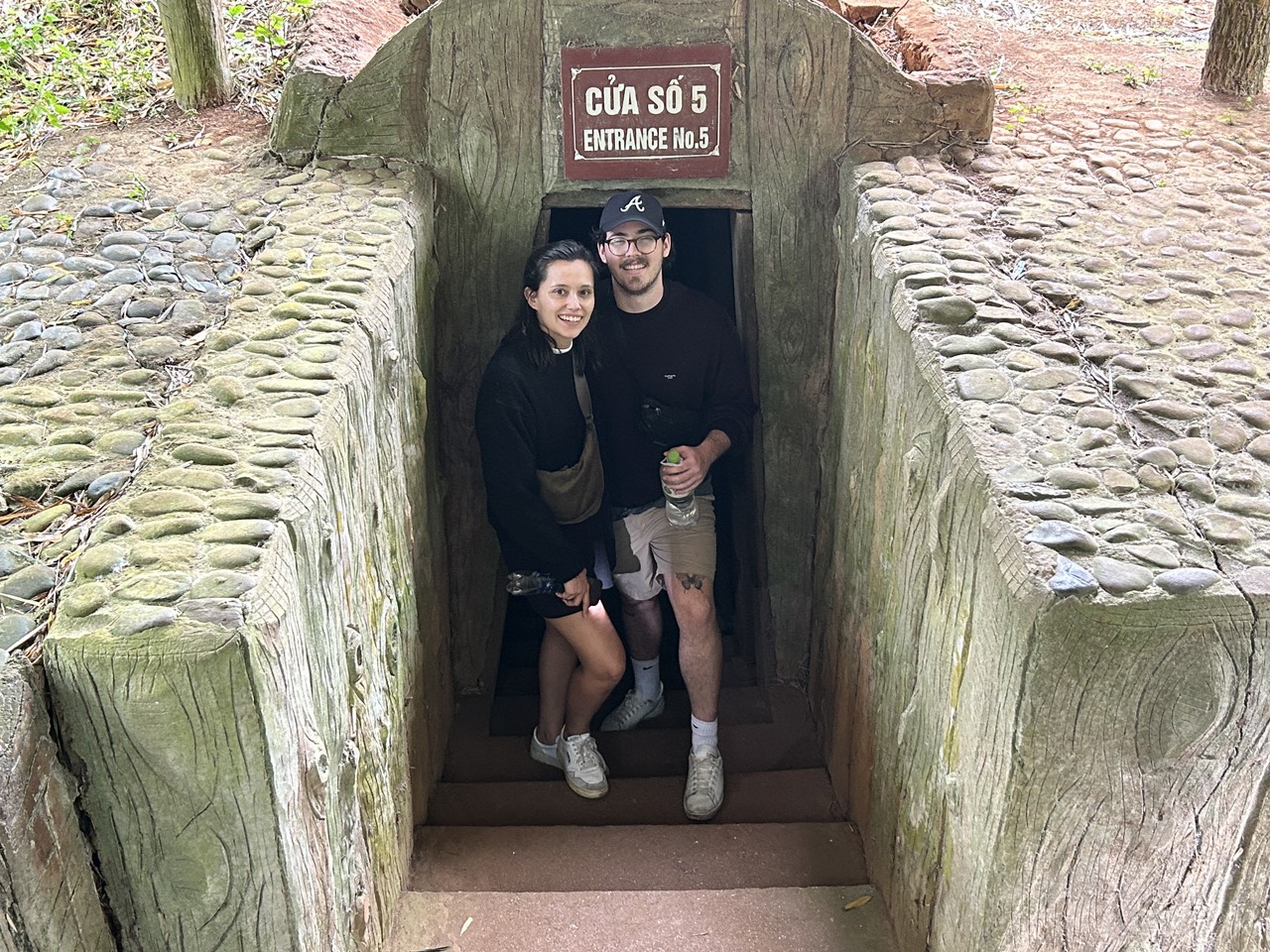Marble Mountains Da Nang: A Spiritual and Cultural Destination
Nestled along the stunning coastline of Central Vietnam, the Marble Mountains Da Nang stand as one of the most remarkable spiritual and cultural destinations in Southeast Asia. These five limestone hills, each named after the five elements—water, wood, fire, metal, and earth—offer visitors an extraordinary journey through centuries of Vietnamese history, Buddhist spirituality, and natural wonder.
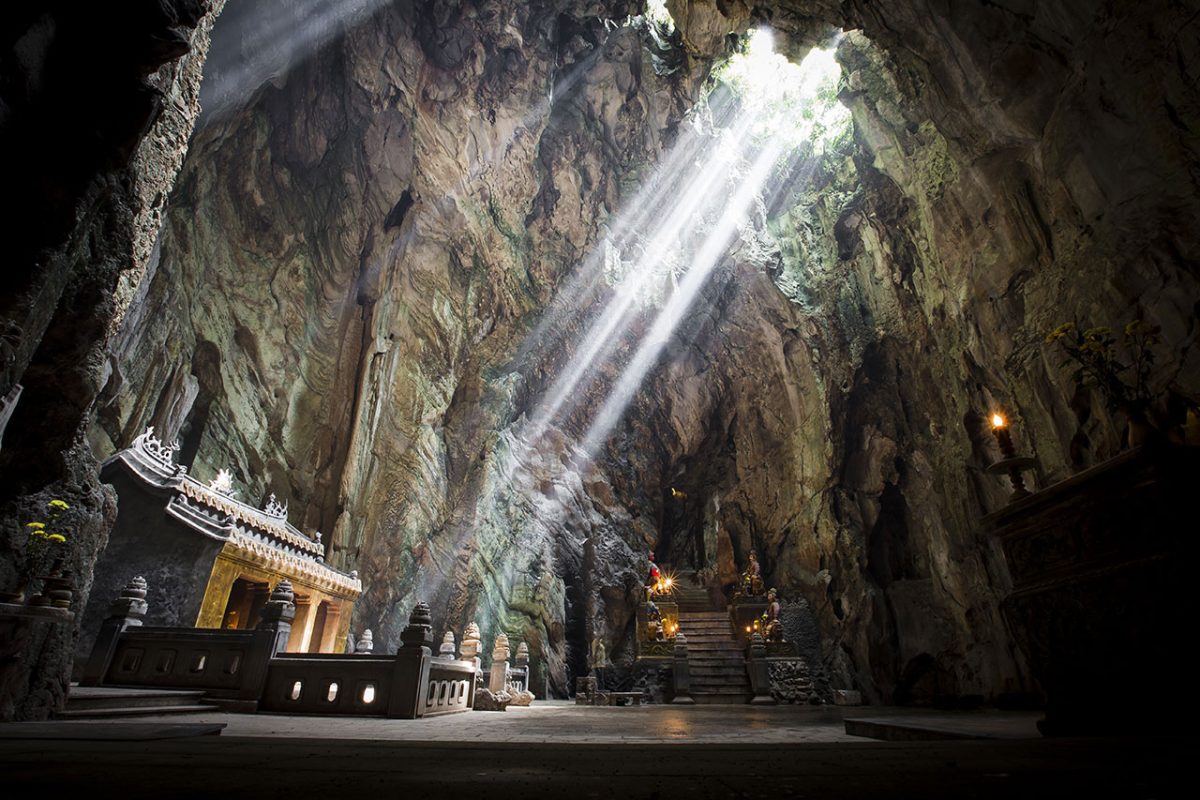
What Makes Marble Mountains a Must-Visit Destination?
Unlike typical tourist attractions, the Marble Mountains combine multiple elements that create an unforgettable experience. These ancient formations house numerous Buddhist temples, mysterious caves, and panoramic viewpoints that have attracted pilgrims and travelers for over 500 years. The unique blend of natural beauty and spiritual significance makes this destination particularly special for those seeking both adventure and cultural enlightenment.
“The Marble Mountains represent the perfect harmony between nature and spirituality—a place where ancient Vietnamese culture lives and breathes within the stone itself.” – Local Buddhist Monk
The Five Sacred Peaks: Understanding Their Significance
Each mountain carries deep spiritual meaning rooted in Vietnamese Buddhism and traditional philosophy:
- Thuy Son (Water Mountain): The largest and most visited peak, housing the majority of temples and caves
- Moc Son (Wood Mountain): Symbolizing growth and vitality in Vietnamese culture
- Hoa Son (Fire Mountain): Representing transformation and energy
- Kim Son (Metal Mountain): Associated with strength and determination
- Tho Son (Earth Mountain): Embodying stability and grounding forces
Essential Temples and Pagodas to Explore
The spiritual architecture within Marble Mountains showcases centuries of Vietnamese religious artistry. Each temple tells a unique story through its intricate carvings, ancient statues, and sacred artifacts.
Tam Thai Pagoda: The Heart of Buddhist Worship
Dating back to the 17th century, Tam Thai Pagoda serves as the spiritual center of Thuy Son Mountain. This three-story structure features elaborate dragon motifs, colorful murals depicting Buddha’s life, and houses several important religious relics. Visitors often feel a profound sense of peace when entering this sacred space, especially during early morning prayer sessions.
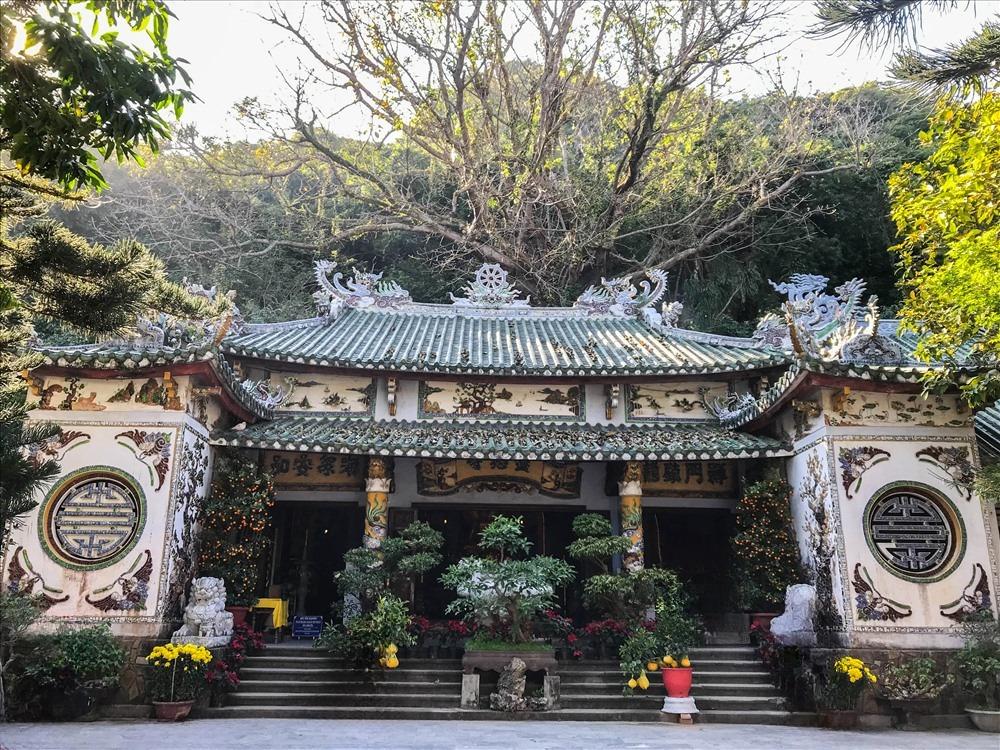
Linh Ung Pagoda: Where Heaven Meets Earth
Perched dramatically on the mountainside, Linh Ung Pagoda offers breathtaking views of the East Sea and surrounding countryside. The pagoda’s white marble Buddha statue, standing 10 meters tall, has become an iconic symbol of Da Nang’s spiritual landscape. During full moon ceremonies, hundreds of locals gather here to pray and meditate, creating an atmosphere of collective spirituality rarely found elsewhere.

Mystical Caves: Natural Cathedrals of Stone
The cave systems within Marble Mountains represent nature’s own temples, formed over millions of years through geological processes. These natural wonders have served as meditation retreats, wartime shelters, and places of worship throughout Vietnamese history.
Huyen Khong Cave: The Cathedral of Light
Perhaps the most spectacular of all caves, Huyen Khong Cave features natural skylights that create ethereal beams of light during certain times of day. Local legends speak of ancient monks achieving enlightenment within these walls, and the cave’s unique acoustics make it a popular spot for Buddhist chanting ceremonies. The best time to visit is between 11 AM and 1 PM when sunlight floods the cave interior.
Tang Chon Cave: Hidden Mysteries Underground
This extensive cave network extends deep into the mountain, with multiple chambers connected by narrow passages. During the Vietnam War, Tang Chon Cave served as a field hospital, and visitors can still see remnants of this turbulent period. The cave’s cooler temperatures provide welcome relief from Da Nang’s tropical heat, making it an ideal midday exploration spot.
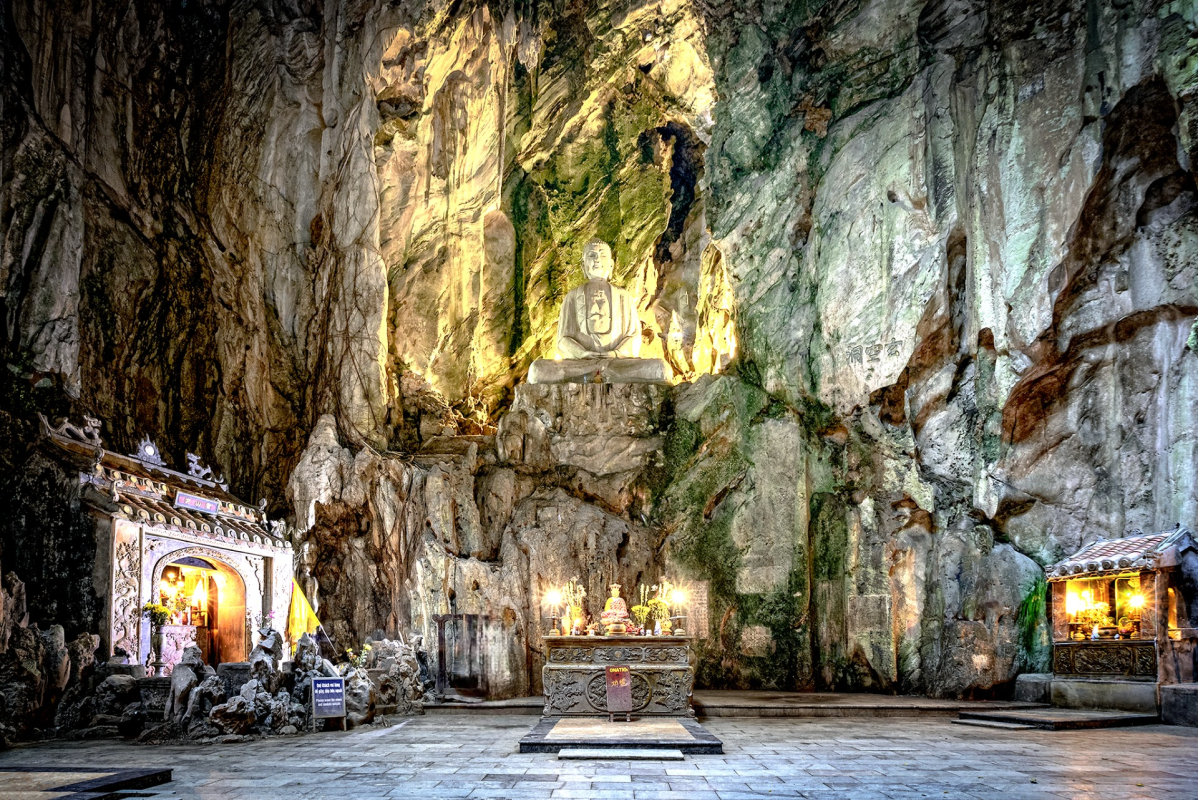
Practical Visitor Information: Planning Your Journey
Understanding the logistics of visiting Marble Mountains ensures a smooth and enriching experience. Here’s everything you need to know for your spiritual journey:
Best Times to Visit
- Early Morning (6:00-8:00 AM): Cooler temperatures, fewer crowds, and magical sunrise views
- Late Afternoon (4:00-6:00 PM): Golden hour photography and sunset panoramas
- Avoid Midday (11:00 AM-2:00 PM): Intense heat and peak tourist crowds
Entrance Fees and Tickets
Current pricing structure for Marble Mountains entrance:
- General admission: 40,000 VND per person
- Elevator to mountain top: 15,000 VND (one way)
- Am Phu Cave special ticket: 20,000 VND
- Children under 1.2m: Free entry
Pro Tip: Purchase a combination ticket at the main entrance to save time and avoid queuing at individual attractions.
Cultural Etiquette: Respecting Sacred Spaces
As an active religious site, Marble Mountains requires visitors to observe certain cultural protocols. Understanding and following these guidelines shows respect for local traditions and enhances your spiritual experience.
Dress Code Requirements
Temples within the complex enforce modest dress standards:
- Shoulders and knees must be covered
- Remove shoes before entering temple buildings
- Avoid revealing clothing or beachwear
- Bring a light scarf or sarong for coverage if needed
Photography Guidelines
While photography is generally permitted, certain restrictions apply:
- No flash photography inside caves or temples
- Respect “No Photo” signs near sacred artifacts
- Ask permission before photographing monks or worshippers
- Drone photography requires special permits
Hidden Gems: Lesser-Known Attractions
Beyond the main tourist circuit, Marble Mountains harbor several lesser-known sites that offer unique perspectives on Vietnamese culture and history.
The Stone Carving Village
At the mountain’s base, the traditional Non Nuoc stone carving village has operated for over 400 years. Skilled artisans transform raw marble into intricate sculptures using techniques passed down through generations. Visitors can watch craftsmen at work and purchase authentic souvenirs directly from the source. This living heritage site provides insight into how Vietnamese traditional crafts continue to thrive in the modern era.
Vong Hai Dai Viewpoint
This panoramic viewpoint, often missed by rushed tour groups, offers 360-degree views encompassing the East Sea, Da Nang city, and surrounding countryside. The climb involves 156 steep steps, but the reward includes some of the most spectacular vistas in Central Vietnam. Early morning visits often coincide with local residents performing tai chi exercises, adding cultural authenticity to the experience.
Seasonal Considerations: When Nature Enhances Spirituality
Each season brings unique characteristics to Marble Mountains, affecting both practical considerations and spiritual atmosphere:
Dry Season (February-August)
- Advantages: Clear skies, excellent visibility, dry cave floors
- Challenges: High temperatures, larger crowds, increased prices
- Special Events: Buddha’s Birthday celebrations (May)
Rainy Season (September-January)
- Advantages: Lush vegetation, dramatic cloud formations, fewer tourists
- Challenges: Slippery paths, potential flooding in lower caves
- Special Events: Lunar New Year preparations (January/February)
Connecting with Local Culture: Beyond the Mountains
The Marble Mountains experience extends beyond the peaks themselves. The surrounding area offers numerous opportunities to engage with authentic Vietnamese culture and enhance your understanding of the region’s spiritual significance.
Local Food Experiences
Several family-run restaurants near the entrance serve traditional Central Vietnamese cuisine. Must-try dishes include:
- Mi Quang: Regional noodle soup with turmeric-infused broth
- Banh Xeo: Crispy rice pancakes with fresh herbs
- Che: Sweet dessert soup perfect for post-climb refreshment
Morning Market Visits
The nearby Non Nuoc morning market provides authentic glimpses into daily Vietnamese life. Arriving before 7 AM allows visitors to witness locals purchasing offerings for temple visits, including incense, flowers, and fruit. This cultural immersion adds depth to understanding the living religious traditions surrounding Marble Mountains.
Conservation Efforts: Preserving Sacred Heritage
Recent years have seen increased focus on preserving both the natural environment and cultural heritage of Marble Mountains. Understanding these efforts helps visitors appreciate the delicate balance between tourism and conservation.
Environmental Protection Initiatives
Local authorities and Buddhist organizations collaborate on several conservation programs:
- Limiting daily visitor numbers during peak season
- Restoration of damaged cave formations
- Native plant species reforestation projects
- Waste reduction and recycling programs
Cultural Preservation Projects
Ongoing efforts to maintain the site’s spiritual integrity include:
- Documentation of oral histories from elderly monks
- Restoration of ancient murals and statues
- Training programs for young monks in traditional practices
- Digital archiving of historical artifacts
Planning Your Spiritual Journey: Final Recommendations
A visit to Marble Mountains Da Nang offers more than typical sightseeing—it provides an opportunity for spiritual reflection and cultural understanding. Whether you’re drawn by religious interest, historical curiosity, or natural beauty, this sacred site delivers profound experiences that resonate long after departure.
Essential Preparation Checklist
- Physical Fitness: Moderate fitness level required for climbing stairs and navigating caves
- Time Allocation: Minimum 3-4 hours for meaningful exploration
- Equipment: Comfortable walking shoes, water, modest clothing, flashlight
- Mindset: Open heart and respectful attitude toward sacred spaces
The Marble Mountains stand as testament to Vietnam’s rich spiritual heritage, offering modern visitors a chance to connect with centuries of Buddhist tradition while marveling at nature’s artistry. This unique destination continues to inspire pilgrims and tourists alike, serving as a bridge between the earthly and divine, the ancient and contemporary.
For those seeking deeper exploration of Central Vietnam’s cultural treasures, consider extending your journey to nearby attractions like the My Son Sanctuary or the historic streets of Hoi An Ancient Town. These complementary destinations provide broader context for understanding the region’s diverse heritage.
Whether you come seeking spiritual enlightenment, cultural education, or simply spectacular views, Marble Mountains Da Nang delivers an experience that touches both body and soul. As you climb these sacred peaks and explore their hidden depths, you join countless generations who have found inspiration, peace, and wonder within these limestone giants rising from the Vietnamese coast.


